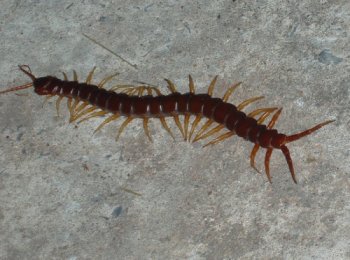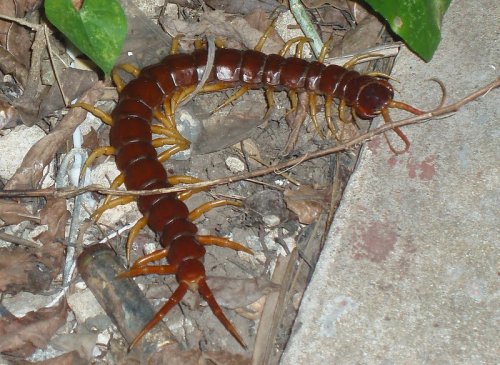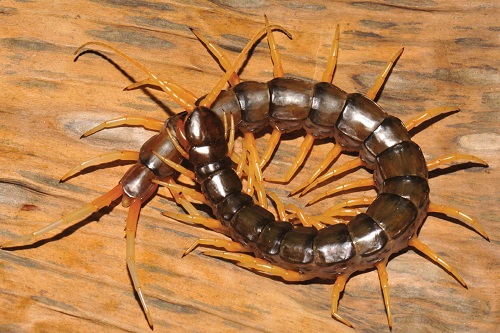Venomous Predators: Giant Red Centipede
I’ve had them all in my garden: snakes, spiders, scorpions and other creepy crawleys… but recently, after 11 years in Laos, I came face to face with a new and truly scary species: the Giant Red Centipede (Scolopendra subspinipes subspinipes).
When I saw it crawling around I was totally dismayed that such a creature might be living in my yard…. and actually I noticed it under my dining table (inside the house) while having dinner ! Yes, these guys are predators and are highly venomous … this one was probably looking for a big dinner himself, smile.
Giant red centipedes are enormous, extremely fast and can pack a serious punch when it comes to biting. They can grow up to 30cm (12 inches) in length and they are wider than your thumb. If you are unsure how to tell the difference between a millipede and a centipede, take a closer look. Centipedes have one pair of legs per segment while millipedes have two pairs.
A bite from one of these red centipedes can be life-threatening to a small child or if you have a bee-sting allergy. Upon asking a Lao friend if these could kill, he responded with: “The chances are that they won’t kill you, but if you are bitten by a big one, the pain is enough for you to wish that it did kill you.” You’ve been warned.
While the Giant Red Centipede is considered to be a “good” creature to have around because it does hunt and eat large prey, I do not consider anything that is venomous to be welcome at my house. Especially if it is an aggressive creature which this centipede is known to be.
Here is a science video of another variety of centipede hunting and capturing a tarantula. This video is example of how strong and aggressive of a hunter they are, so don’t watch this video if you’re squeamish.
This article was originally published in 2012


